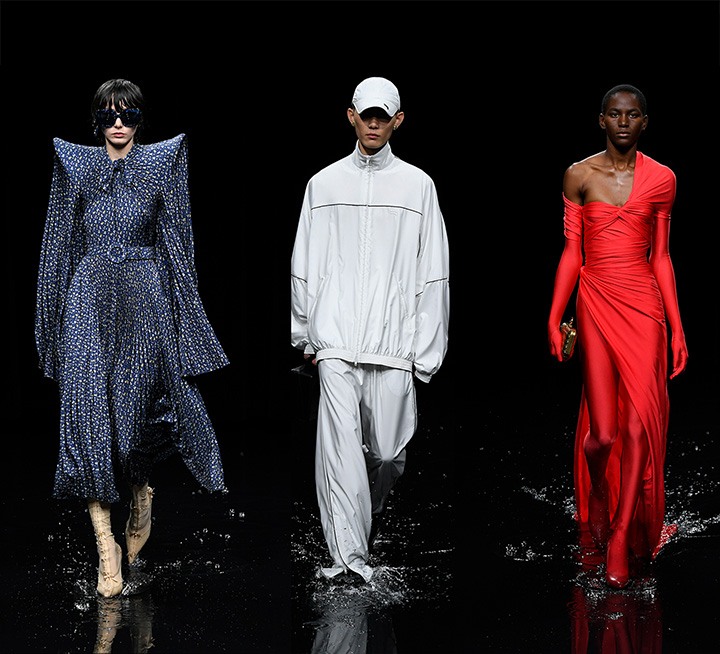
Top Fall 2020 Runway Looks. Images courtesy of Balenciaga.
By Nick Remsen
In season 3 of Selling Sunset—Netflix’s shiny reality soap about real estate transacting in Los Angeles, which has released two installments in 2020—a flamboyant agent named Christine Quinn alights in her office, decked out in a neon green outfit similar in hue to the blinding Lamborghinis one sees in jet-set destinations. It’s hard not to notice her bag, also in fluorescence, with “BALENCIAGA” printed across its body (the carrier is called the “Ville” and is among the brand’s staples). The scene is a high-camp moment, full of Hollywood panache, if projection. Yet simultaneously, in March—a moment before the world imploded—Balenciaga sent out a prescient, nearly pitch-black collection in Paris, with a runway and front row submerged in water and clothes that were not exactly sunny in tone. Think: ecclesiastical draping, hulking tailoring and what the label calls “hardcore aesthetics.” One may argue that the visuals are linked: late-stage capitalism, dripping in over-saturation (be it color or moisture), finally leading to a dark hell-on-earth. But, more effectively, the variance demonstrates Demna Gvasalia’s deft ability at not only infiltrating the culture, but divining it, too.
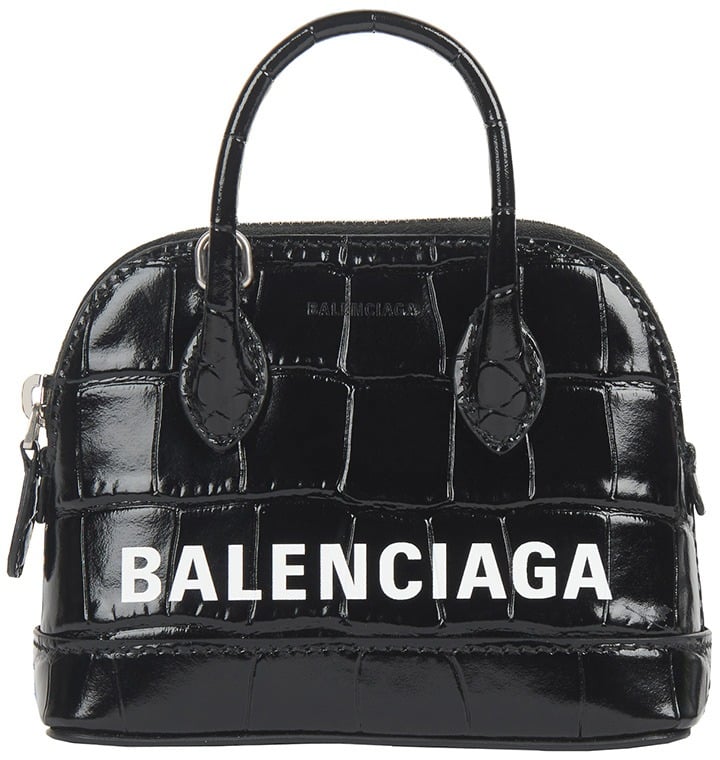
Balenciaga Ville XXS top handle bag.
Born in Sokhumi, Georgia and now a resident of Zurich, Switzerland, Gvasalia rose to industry fame with the much-hyped arrival of Vetements, the label he spearheaded with his brother, Guram. Prior to launching the irreverent brand— known for layering social scrutinies into its clothing, such as booties with Bic lighter heels or hoodies emblazoned with pop culture ephemera (like an attenuated poster for the film Titanic)—Gvasalia trained at Louis Vuitton and Maison Martin Margiela. He tapped in at Balenciaga in 2015, and fully departed Vetements in 2019.
At Balenciaga, Gvasalia has successfully carried over, and enmeshed, his singular ability to weave critical observations into sumptuous, serious clothing (flooded runways and drench robes being just one example). In tandem, much of what he does also turns into splashy hits, from typeface logo-printed anoraks to crushed velvet crinoline dresses. At his Spring 2020 show, which was staged in a faux-European Parliament hall rendered in clinical blue, scents concocted by the Norwegian artist Sissel Tolaas were intermittently spritzed through the room: blood, money, antiseptic and gasoline. The collection’s theme was “power dressing.” For Spring 2018, the tone was softer. Gvasalia sent out a lineup inspired, simply, by fathers and their kids strolling in the park.
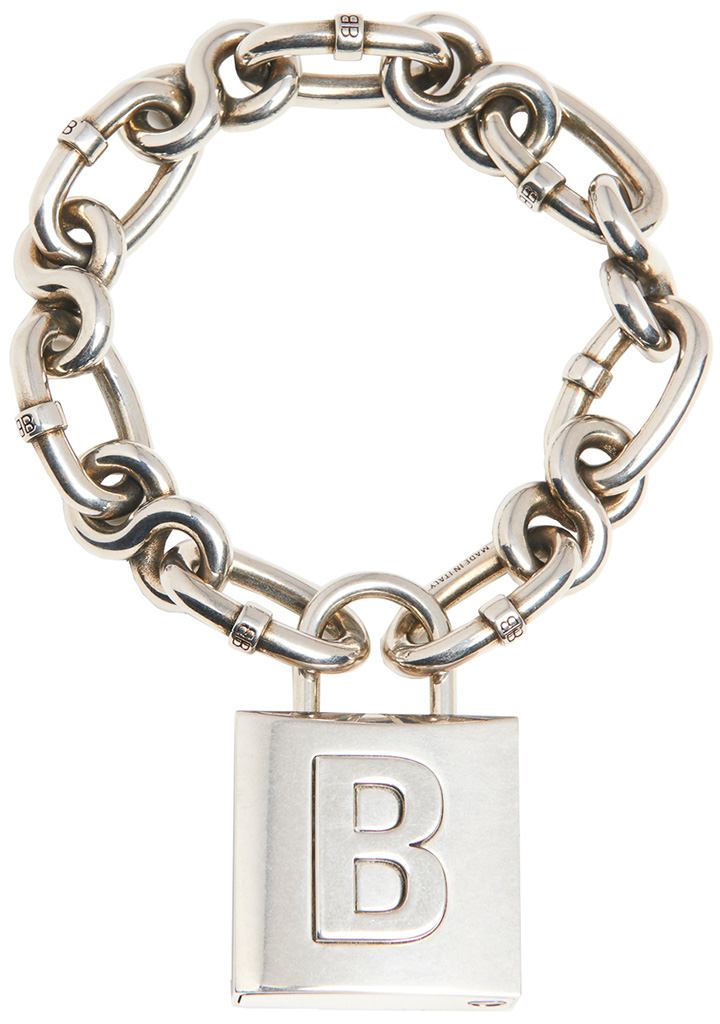
Balenciaga Lock chain bracelet.
To that point, it’s important to note that any sense of pall or skepticism is almost always balanced by Gvasalia’s acumen at making really, truly beautiful garments, with all the sloping curvature, tuned drama and expert finesse of the label’s founder. Cristóbal Balenciaga, who started the company in 1919, was known as being among the most skilled tailors and drapers of the early to mid-century, outpacing those in Paris from his atelier in Madrid, Spain. In more than a few ways, parallels can be drawn between Balenciaga and Gvasalia; both chose to stay on the outside, peering in and retaining information, and both upheld a certain austerity that could be transmuted into extraordinary finery.
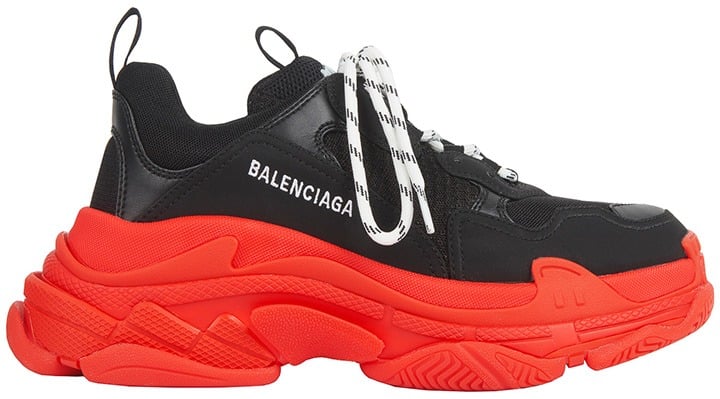
Balenciaga Triple S sneaker.
The latter, however, lives in a world unrecognizable to the former and, as such, it is his one-of-a-kind skill that propels the house’s legacy. Gvasalia somehow absorbs this evermore complex planet we occupy and strikes exactly the right pitch and depth needed to satiate a huge range of tastes—from those with a penchant for neon to others pulled towards le noir.
Click here to read more in our Fall Issue of Bal Harbour Magazine.


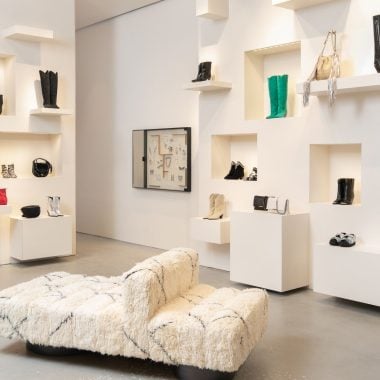


Leave a Comment